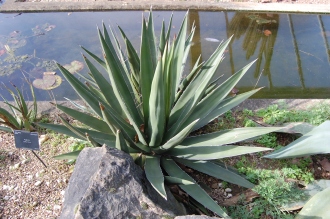Position: Full sun to partial shade
Flowering period: All year round
Soil: Moist, well drained
Eventual Height: 3m (usually less in cultivation)
Eventual Spread: 1m
Hardiness: 11, 12, 13
Family: Asparagaceae
Subfamily: Nolinoideae
Dracaena goldieana is a slow growing tropical evergreen shrub with an upright habit. When young this plant usually has a single stem, as it matures it may branch. Its dark green leaves have grey/ green banding, are ovate with entire margins, are up to 25cm long and 13cm across. Its small white bell shaped flowers appear on stems which emerge from its leaves.
Dracaena goldieana, commonly known as Green Zebra Plant, Zebra Striped Dragon Tree, is native to tropical west tropical Africa. In its native habitat it grows as a tropical woodland understory plant.
The etymological root of the binomial name Dracaena is derived from the Greek drakaina meaning ‘she dragon’. Goldieana is named after Hugh Goldie, a 19th century missionary.
The landscape architect may find Dracaena goldieana useful as an attractive foliage houseplant suitable for atrium type planting schemes.
Ecologically, Dracaena goldieana flowers are attractive to pollinating insects.
Dracaena goldieana prefers moist, humus rich, well-drained soils. It tolerates most pH of soil.
When maintaining Dracaena goldieana as a houseplant its soil should be watered regularly and sparingly, the soil should never be wet. Watering should be reduced during the winter months. Its preferred active growing temperature rages from between 18ºc to 28ºc. Feeding with weak fertiliser solution should be carried out once a month during the growing season.
![]()
Landscape Architecture











